- GENERAL
| SCHOOL | SCHOOL OF SOCIAL, POLITICAL AND ECONOMIC SCIENCES | ||||
| DEPARTMENT | SOCIAL POLICY | ||||
| LEVEL OF STUDIES | LEVEL 6 | ||||
| COURSE CODE | 29 | SEMESTER | 8th | ||
| COURSE TITLE | Inequality, poverty and social exclusion | ||||
| TEACHING ACTIVITIES If the ECTS Credits are distributed in distinct parts of the course e.g. lectures, labs etc. If the ECTS Credits are awarded to the whole course, then please indicate the teaching hours per week and the corresponding ECTS Credits. |
TEACHING HOURS PER WEEK | ECTS CREDITS | |||
| 3 | 6 | ||||
| Please, add lines if necessary. Teaching methods and organization of the course are described in section 4. | |||||
| COURSE TYPE
Background, General Knowledge, Scientific Area, Skill Development |
Scientific Area | ||||
| PREREQUISITES:
|
– | ||||
| TEACHING & EXAMINATION LANGUAGE: | Greek | ||||
| COURSE OFFERED TO ERASMUS STUDENTS: | – | ||||
| COURSE URL: | https://sp.duth.gr/courses/ανισοτητα-φτωχεια-και-κοινωνικοσ-απο/ | ||||
- LEARNING OUTCOMES
| Learning Outcomes | |
| Please describe the learning outcomes of the course: Knowledge, skills and abilities acquired after the successful completion of the course. | |
| · Search, analysis and synthesis of data and information
· Teamwork · ICT Use · Working in an interdisciplinary environment · Production of new research ideas · Equity and Inclusion · Critical thinking · Promoting free, creative and inductive reasoning |
|
| General Skills | |
| Name the desirable general skills upon successful completion of the module | |
| Search, analysis and synthesis of data and information,
ICT Use Adaptation to new situations Decision making Autonomous work Teamwork Working in an international environment Working in an interdisciplinary environment Production of new research ideas |
Project design and management
Equity and Inclusion Respect for the natural environment Sustainability Demonstration of social, professional and moral responsibility and sensitivity to gender issues Critical thinking Promoting free, creative and inductive reasoning |
- COURSE CONTENT
| 1. |
- LEARNING & TEACHING METHODS – EVALUATION
| TEACHING METHOD Face to face, Distance learning, etc. |
Face to face | ||||||||||||||||||
| USE OF INFORMATION & COMMUNICATIONS TECHNOLOGY (ICT) Use of ICT in Teaching, in Laboratory Education, in Communication with students |
Yes | ||||||||||||||||||
| TEACHING ORGANIZATION
The ways and methods of teaching are described in detail. Lectures, Seminars, Laboratory Exercise, Field Exercise, Bibliographic research & analysis, Tutoring, Internship (Placement), Clinical Exercise, Art Workshop, Interactive learning, Study visits, Study / creation, project, creation, project. Etc.
The supervised and unsupervised workload per activity is indicated here, so that total workload per semester complies to ECTS standards. |
|
||||||||||||||||||
| Student Evaluation
Description of the evaluation process Assessment Language, Assessment Methods, Formative or Concluding, Multiple Choice Test, Short Answer Questions, Essay Development Questions, Problem Solving, Written Assignment, Essay / Report, Oral Exam, Presentation in audience, Laboratory Report, Clinical examination of a patient, Artistic interpretation, Other/Others Please indicate all relevant information about the course assessment and how students are informed |
Short Answer Questions, Oral Exam, Essay Development
|
- SUGGESTED BIBLIOGRAPHY
| Papatheodorou, C., Missos, V. & Papanastasiou, S. (2019). Social implications of the crisis and of the the austerity policies in Greece. INE/GSEE, Athens. |
ANNEX OF THE COURSE OUTLINE
Alternative ways of examining a course in emergency situations
| Teacher (full name): | Stefanos Papanastasiou |
| Contact details: | spapanas@sp.duth.gr |
| Supervisors: (1) | NO |
| Evaluation methods: (2) | Written assignment or/and exercises
|
| Implementation Instructions: (3) | During the examination period, grading 0 to 10 |
- Please write YES or NO
- Note down the evaluation methods used by the teacher, e.g.
- written assignment or/and exercises
- written or oral examination with distance learning methods, provided that the integrity and reliability of the examination are ensured.
- In the Implementation Instructions section, the teacher notes down clear instructions to the students:
- a) in case of written assignment and / or exercises: the deadline (e.g. the last week of the semester), the means of submission, the grading system, the grade percentage of the assignment in the final grade and any other necessary information.
- b) in case of oral examination with distance learning methods: the instructions for conducting the examination (e.g. in groups of X people), the way of administration of the questions to be answered, the distance learning platforms to be used, the technical means for the implementation of the examination (microphone, camera, word processor, internet connection, communication platform), the hyperlinks for the examination, the duration of the exam, the grading system, the percentage of the oral exam in the final grade, the ways in which the inviolability and reliability of the exam are ensured and any other necessary information.
- c) in case of written examination with distance learning methods: the way of administration of the questions to be answered, the way of submitting the answers, the duration of the exam, the grading system, the percentage of the written exam of the exam in the final grade, the ways in which the integrity and reliability of the exam are ensured and any other necessary information.
There should be an attached list with the Student Registration Numbers only of students eligible to participate in the examination.
 Ο Πρόεδρος και τα μέλη του Διδακτικού Προσωπικού καλωσορίζουν τους νεοεισαχθέντες φοιτητές του Τμήματος.
Ο Πρόεδρος και τα μέλη του Διδακτικού Προσωπικού καλωσορίζουν τους νεοεισαχθέντες φοιτητές του Τμήματος.
